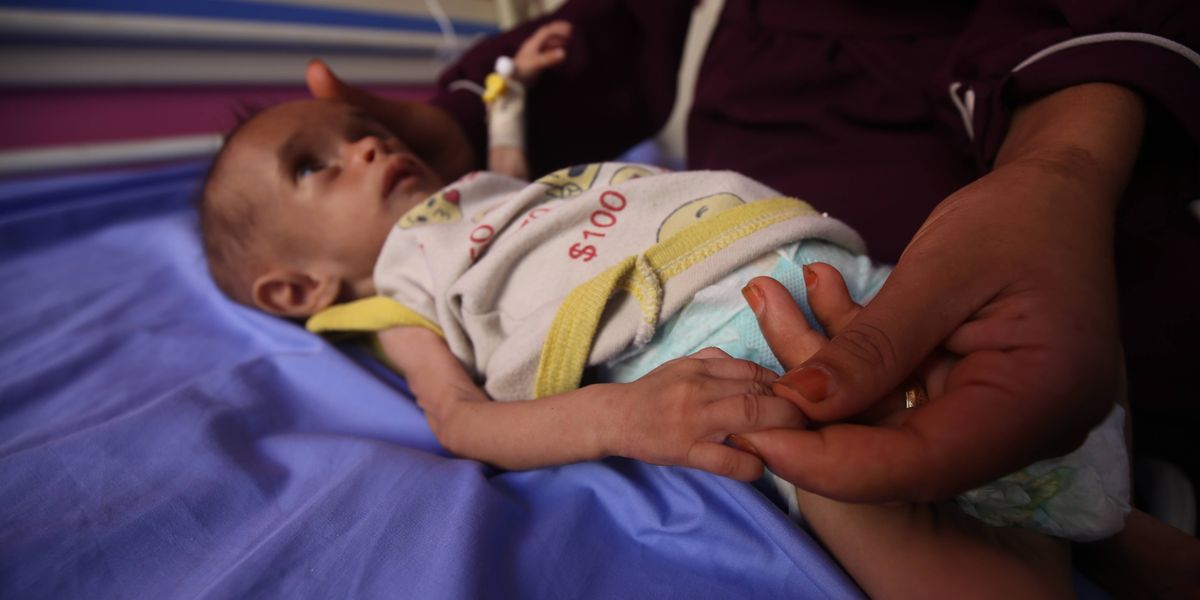
Starvation is just one weapon if eradicating 'the enemy' is the Netanyahu government's ultimate objective
The prospects for negotiating a ceasefire and an end to the humanitarian disaster in the Gaza Strip appear as dim as ever. Israeli and U.S. representatives walked out of talks with Hamas in Qatar that had been mediated by the Qataris and Egyptians. Israeli Prime Minister Benjamin Netanyahu is talking about “alternative” means of achieving Israel’s goals in the territory.
President Donald Trump, echoing Netanyahu’s levying of blame on Hamas, asserted that “Hamas didn’t really want to make a deal. I think they want to die.” Trump went on to mention a need to “finish the job,” evidently referring to Israel’s continued devastating assault on the Strip and its residents.
I have been thinking for a long time about the negotiation of ceasefires. Nearly 50 years ago, I wrote a book, “Negotiating Peace: War Termination as a Bargaining Process,” which explored the diplomatic and military dynamics of how two belligerents negotiate a peace while simultaneously fighting a war.
What is taking place in Gaza now is mostly not a war, even though that term commonly is applied to the violence there. It is instead a largely unilateral assault on a population and its means of living. It is a situation in which one side, Israel, has — as Trump might put it — nearly all the cards.
The news stories emerging almost daily from Gaza are not about pitched battles between the Israeli Defense Forces (IDF) and Hamas fighters. They are mostly not about battles at all. Instead, they are about the latest large-scale killing by Israel of Gazans, mostly civilians, at a rate that has averaged about 150 deaths per day since the current round of carnage began in late 2023. Civilians are killed largely with airstrikes but also more recently through getting shot while seeking ever-scarcer food.
Mass starvation has become perhaps the most gut-wrenching part of the Gaza catastrophe, and one where Israel has again tried to shift blame onto Hamas. A longtime Israeli accusation in endeavoring to shut down the United Nations Relief and Works Agency (UNRWA)—the principal international organization with the mission of aiding Palestinian refugees, including in Gaza—is that Hamas supposedly was stealing UNRWA-supplied food. Trump has echoed that accusation.
A study by the U.S. Agency for International Development (before the Trump administration dismantled the agency) of reported incidents of loss or theft of U.S.-supplied humanitarian assistance in Gaza found no evidence that Hamas has engaged in widespread diversion of aid. More recent press reporting shows that the IDF itself has found no evidence of Hamas seizing or diverting aid.
Israel’s opposition to UNRWA has nothing to do with Hamas or with theft of humanitarian aid. It instead concerns how UNRWA — because it is a United Nations agency explicitly focused on Palestinians — constitutes an international recognition that the Palestinians are a nation and that many of them are refugees from their homeland.
The humanitarian situation in Gaza got worse once Israel succeeded in pushing UNRWA aside. The U.S.-backed and Israeli-controlled alternative aid scheme is not only woefully inadequate in meeting immediate needs but also designed as an adjunct to Israel’s ethnic cleansing objectives. The limitation of aid to a few distribution points facilitates the forced relocation of surviving Gazans into what amounts to a concentration camp, as a possible prelude to removal from the Gaza Strip altogether.
Some aid has recently been dropped into Gaza by air. Airdrops are an ineffective and inefficient way of trying to relieve the starvation. The amounts delivered are a tiny fraction of what is needed. The cost of delivery is far higher than by land. As demonstrated by an earlier U.S. effort to deliver aid this way, some of the supplies are lost because they fall into the sea or, even worse, kill people crushed by falling pallets. But for some donors, an airdrop serves as a visually dramatic conscience-calming gesture.
For Israel, it serves as a distraction from the fact that the biggest impediment to getting humanitarian aid into the Gaza Strip is Israel’s continued land blockade of the territory. Valuing that distraction, Israel itself has joined in the airdrop gesture. At the same time, however, Israel continues to allow only a trickle of aid to cross the land border, with many hundreds of truckloads left to spoil and be destroyed by the IDF.
In my decades-old book, I identified a type of war ending that is an alternative to a negotiated settlement as “extermination/expulsion,” meaning that the militarily dominant side physically obliterates its opponent or pushes it out of contested territory. Extermination/expulsion of the opponent is an appropriate label for Israel’s objective in Gaza.
The prevailing Israeli conception of the opponent, or enemy, in Gaza is the entire Palestinian population, an attitude that was already well rooted on the Israeli Right before the Hamas attack in October 2023 and has grown even stronger and wider since then. The deaths already inflicted, directly or indirectly, by the IDF have significantly advanced the extermination objective. The expulsion part has mostly been the stuff of internal Israeli deliberations, although it came more into the open when Trump gave Netanyahu’s government the gift of endorsing the ethnic cleansing with his Riviera-in-Gaza proposal.

No comments:
Post a Comment